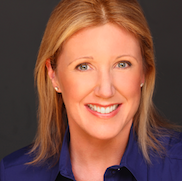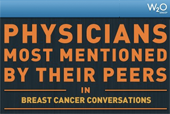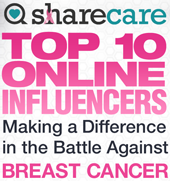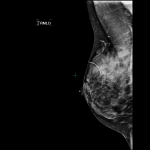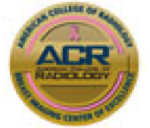Montclair Breast Center Responds to Mammogram Controversy
February 14th, 2014The physicians at Montclair Breast Center are extremely disappointed by the NY Times’ recent decision to run a front page article that cites an incredibly flawed study from the British Medical Journal as if it is actually legitimate science. The BMJ article is based on the deeply flawed and widely discredited Canadian National Breast Screening Study, which used a fundamentally corrupted allocation process for the two patient groups that were compared; it was also based on mammograms from the 1980’s that were of incredibly poor quality, even by the standards of…
Read MoreFirst, Do No Harm: The Spectacular Failure of a Government Panel
February 28th, 2012As a veteran of World War II, my grandfather was a GI Bill success story, the first man to go to college from his impoverished neighborhood in Jersey City thanks to government at its finest. A card-carrying member of the state teachers’ union, and a politically active Democrat for most of his life, it came as something of a shock to me when, after a few decades of observing big government debacles, my grandfather became one of Ronald Reagan’s most ardent fans. I still remember his delight over the classic Reaganism, “The nine most terrifying words in the English language…
Read MoreGood News For Early Detection in New Jersey!
January 20th, 2012Thanks to the tireless efforts of dedicated grassroots patient advocates, NJ State Senators Loretta Weinberg and Nia Gill have sponsored a bill that will be brought before the next legislative session. This bill requires that all mammogram reports contain information on breast density, and requires insurers to cover comprehensive breast ultrasound screening if a mammogram demonstrates dense breast tissue. Studies have shown that adding an ultrasound to the mammogram for women with dense breasts results in a 50% increase in breast cancer detection.
At …
Read MoreThe Myth of the Negative Mammogram
January 9th, 2012It is a scenario familiar to all breast imaging practices.
A patient feels a lump in her breast and calls her doctor. The doctor examines her, agrees that a lump is present, and refers the patient to a breast imaging facility for a diagnostic mammogram and breast ultrasound (also known as a sonogram). At her mammogram appointment, a little sticker is placed on the lump felt by the patient, and mammogram images are taken. Something may or may not be seen on the mammogram at the site of the lump. A breast sonogram is performed, and a suspicious mass is seen, clear as day. …
Read MoreResponse to NY Times article: Mammogram’s Role as Savior Is Tested
November 2nd, 2011Tara Parker-Pope’s recent article in the New York Times Science Section discounts the role of mammography as an essential tool in the quest to save women from premature death due to breast cancer. She reports on the conclusion drawn by researchers Welch and Frankel from Dartmouth, who published a statistical analysis using epidemiologic data and computer software in this article in Archives of Internal Medicine this month. Their conclusion: “Most women with screen-detected breast cancer have not had their life saved by screening. They are instead either…
Read More8 Things You Can Do TODAY to Lower Your Risk of Advanced Breast Cancer
October 29th, 2011Breast Cancer Awareness Month ends on Monday. Of course awareness is important, but knowing what specific actions you can take to protect yourself against the disease is empowering. Breast cancer can strike anyone, with or without risk factors. However, there are several things you can do NOW to lessen the likelihood of advanced breast cancer happening to you.
1. Lace up and take a walk! According to the Women’s Health Initiative study, women who walked just 30 minutes per day at least 5 days a week (exercise pace, not a leisurely stroll) decreased their breast…
Read MoreBreast Density Advocates on Good Morning America
October 13th, 2011Nancy Cappello, PhD and JoAnn Pushkin were interviewed on Good Morning America last week, talking about their experiences as women doing “everything right”: mammograms every year, healthy lifestyle, annual checkups. Yet even though they were good, compliant patients, they both were diagnosed with advanced breast cancers. How did this happen? Well, they were never informed that they have dense breast tissue, which confers an increased risk for breast cancer, AND makes a mammogram so hard to read that up to half of cancers won’t be seen.
Since they were given “normal”…
Read MoreChristina Applegate Foundation Gives Direct Financial Aid for Breast MRI
October 6th, 2011In 2009, the year after she was diagnosed with breast cancer at age 36 after a screening Breast MRI test, actress Christina Applegate founded Right Action for Women (www.rightactionforwomen.org), a foundation dedicated to educating women about what it means to be at “high risk” for breast cancer.
In addition to education, the foundation offers financial assistance for women 45 years old and younger, with a family history of breast cancer or with a positive BRCA gene test, to gain access to Breast MRI, regardless of insurance status. Insurance companies often …
Read MoreWhen Should I Have My First Mammogram?
October 4th, 2011General Guidelines
For most women, age 40 should be when you start having yearly mammograms in order to minimize your likelihood of developing advanced breast cancer (“Government Mammography Task Force vs. You”). Some doctors send their patients for a baseline mammogram at age 35, and I wouldn’t argue with that.
Family History
If you have a strong family history of breast cancer (mother or sister), start having your mammogram 10 years younger than the age that relative was diagnosed, OR at age 40, whichever is younger. For example, if your sister had breast cancer…
Read MoreGovernment Mammography Task Force Vs. You
September 26th, 2011Top 9 Reasons Why the Government Panel Recommendations on Mammography are Bad for Your Health
If the 2009 USPSTF (U.S. Preventive Services Task Force) recommendations are followed, as many as 20% of breast cancer deaths will be in women who could have been saved. The USPSTF knew this when they issued their report.
1. The Task Force’s own data shows that the most lives are saved by starting mammography screening at age 40, but they chose to ignore that data. They made a value judgment as to how much a woman’s life is worth. The science clearly shows that starting annual …
Read More
